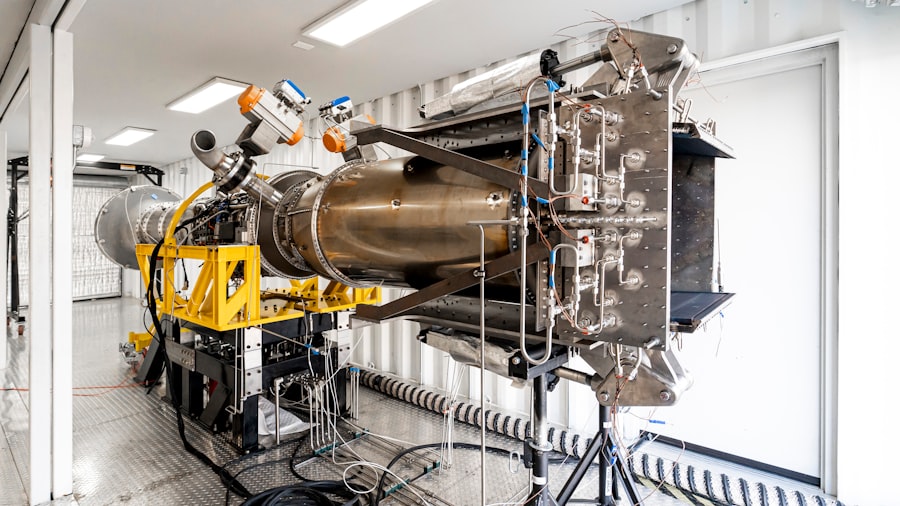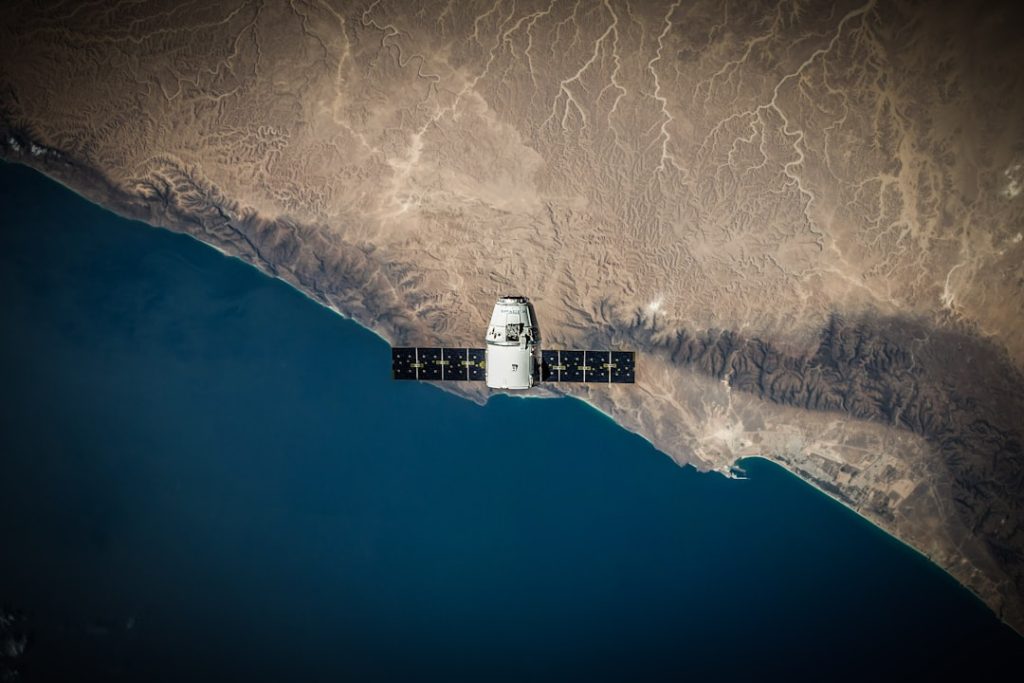Aerospace technology encompasses a broad spectrum of engineering disciplines and scientific principles that are essential for the design, development, and operation of aircraft and spacecraft. This field combines elements of aerodynamics, materials science, structural analysis, propulsion, and avionics to create vehicles capable of navigating through the Earth’s atmosphere and beyond. The evolution of aerospace technology has been marked by significant milestones, from the Wright brothers’ first powered flight in 1903 to the sophisticated space missions of today.
The interplay between innovation and necessity has driven advancements in this sector, making it a cornerstone of modern transportation, defense, and exploration. The aerospace industry is not only pivotal for commercial aviation but also plays a crucial role in national security and global connectivity. With the increasing demand for air travel and the exploration of outer space, aerospace technology continues to evolve rapidly.
The integration of cutting-edge technologies such as artificial intelligence, advanced materials, and sustainable practices is reshaping the landscape of aerospace engineering. As we delve deeper into the current trends and developments in this field, it becomes evident that aerospace technology is at a transformative juncture, poised to redefine how we perceive air and space travel.
Key Takeaways
- Aerospace technology is rapidly evolving with innovations in AI, materials, and manufacturing processes.
- Artificial intelligence and machine learning are enhancing aerospace design, safety, and operational efficiency.
- Advanced materials and manufacturing techniques are improving aircraft performance and durability.
- Space exploration continues to drive technological breakthroughs that influence aerospace development.
- Environmental sustainability and UAV integration are key focus areas shaping the future of aerospace technology.
Current Trends and Developments in Aerospace Technology
In recent years, the aerospace industry has witnessed a surge in innovation driven by technological advancements and changing market dynamics. One prominent trend is the push towards more fuel-efficient aircraft designs. Manufacturers are increasingly focusing on reducing the environmental impact of aviation by developing lighter materials and more efficient engines.
For instance, Boeing’s 787 Dreamliner utilizes composite materials that significantly reduce weight while enhancing fuel efficiency. This shift not only addresses environmental concerns but also meets the growing demand for cost-effective air travel. Another significant development is the rise of urban air mobility (UAM), which envisions a future where air taxis and drones become commonplace in metropolitan areas.
Companies like Joby Aviation and Volocopter are pioneering electric vertical takeoff and landing (eVTOL) aircraft designed for short-distance travel within cities. These innovations promise to alleviate traffic congestion and provide faster transportation options. The regulatory landscape is also evolving to accommodate these new technologies, with governments exploring frameworks to ensure safety and efficiency in urban airspace.
The Impact of Artificial Intelligence and Machine Learning in Aerospace Technology

Artificial intelligence (AI) and machine learning (ML) are revolutionizing aerospace technology by enhancing decision-making processes, improving safety, and optimizing operations. AI algorithms can analyze vast amounts of data generated by aircraft systems in real-time, enabling predictive maintenance that anticipates potential failures before they occur. For example, airlines like Delta are leveraging AI to monitor engine performance and predict maintenance needs, thereby reducing downtime and operational costs.
Moreover, AI is playing a crucial role in autonomous flight systems. Companies such as Boeing and Airbus are investing heavily in developing autonomous aircraft that can operate without human intervention. These systems rely on advanced algorithms to navigate complex airspace, avoid obstacles, and make real-time decisions based on environmental conditions.
The integration of AI not only enhances safety but also opens up new possibilities for air travel, including reduced pilot workload and increased operational efficiency.
Advancements in Materials and Manufacturing Processes for Aerospace Technology
| Advancement | Description | Impact on Aerospace Technology | Example Materials/Processes | Performance Metrics |
|---|---|---|---|---|
| Composite Materials | Use of carbon fiber reinforced polymers and other composites to reduce weight and increase strength. | Improved fuel efficiency, higher strength-to-weight ratio, corrosion resistance. | Carbon fiber, Kevlar, fiberglass | Weight reduction up to 20-30%, tensile strength > 1500 MPa |
| 3D Printing (Additive Manufacturing) | Layer-by-layer fabrication of complex aerospace components with reduced waste. | Faster prototyping, reduced lead times, ability to create complex geometries. | Metal powders (Titanium, Aluminum), polymer filaments | Lead time reduction by 50%, material utilization > 90% |
| High-Temperature Alloys | Development of superalloys capable of withstanding extreme temperatures in engines. | Enhanced engine performance, longer component life at high temperatures. | Nickel-based superalloys, cobalt alloys | Operating temperature > 1100°C, creep resistance > 1000 hours at high temp |
| Surface Coatings and Treatments | Advanced coatings to improve wear resistance, reduce friction, and protect against corrosion. | Extended component lifespan, improved efficiency, reduced maintenance. | Thermal barrier coatings, diamond-like carbon (DLC) | Wear rate reduction by 40%, corrosion resistance improvement by 60% |
| Automated Manufacturing Systems | Integration of robotics and AI for precision manufacturing and quality control. | Higher production accuracy, reduced human error, increased throughput. | Robotic arms, AI inspection systems | Dimensional accuracy within ±0.01 mm, production speed increase by 30% |
The aerospace sector has always been at the forefront of material science innovation, with advancements leading to lighter, stronger, and more durable materials. One notable development is the use of carbon fiber reinforced polymers (CFRP), which have become integral to modern aircraft design due to their high strength-to-weight ratio. The Boeing 787 Dreamliner, for instance, is composed of approximately 50% composite materials, resulting in significant weight savings that translate into improved fuel efficiency.
In addition to materials innovation, manufacturing processes are also evolving. Additive manufacturing, commonly known as 3D printing, is gaining traction in aerospace applications. This technology allows for the production of complex geometries that were previously impossible or cost-prohibitive using traditional manufacturing methods.
Companies like GE Aviation are utilizing 3D printing to create intricate engine components that reduce weight while maintaining performance standards. This shift not only streamlines production but also enables rapid prototyping and customization of parts tailored to specific requirements.
The Role of Space Exploration in Shaping the Future of Aerospace Technology
Space exploration has historically driven advancements in aerospace technology, pushing the boundaries of what is possible in engineering and design. The renewed interest in space missions, fueled by both governmental agencies like NASA and private companies such as SpaceX, is leading to groundbreaking developments that will shape the future of aerospace technology. The Artemis program aims to return humans to the Moon by 2024, paving the way for future Mars missions.
This ambitious endeavor necessitates innovations in propulsion systems, life support technologies, and habitat construction. Moreover, the commercialization of space is opening new avenues for research and development. Companies are exploring opportunities for satellite deployment, space tourism, and even asteroid mining.
The development of reusable rocket technology by SpaceX has significantly reduced the cost of launching payloads into orbit, making space more accessible than ever before. As these initiatives progress, they will undoubtedly influence advancements in aerospace technology across various domains, from propulsion systems to materials science.
Environmental Sustainability and Aerospace Technology

As global awareness of climate change intensifies, the aerospace industry faces increasing pressure to adopt sustainable practices. The sector is responsible for a significant portion of greenhouse gas emissions, prompting manufacturers to explore alternative fuels and energy-efficient technologies. Sustainable aviation fuels (SAFs) derived from renewable sources are gaining traction as a viable solution to reduce carbon emissions from commercial flights.
Airlines like United Airlines are investing in SAF production facilities to ensure a greener future for air travel. In addition to alternative fuels, electric propulsion systems are being developed as a means to minimize environmental impact. Companies such as Wright Electric are working on electric aircraft designed for short-haul flights that could drastically reduce emissions compared to traditional jet engines.
Furthermore, regulatory bodies are beginning to implement stricter emissions standards, compelling manufacturers to innovate continuously in their pursuit of sustainability.
The Integration of Unmanned Aerial Vehicles (UAVs) in Aerospace Technology
Unmanned Aerial Vehicles (UAVs), commonly known as drones, have emerged as a transformative force within aerospace technology. Initially developed for military applications, UAVs are now being utilized across various sectors including agriculture, logistics, surveillance, and disaster response. Their ability to perform tasks without human intervention has led to increased efficiency and reduced operational costs.
In agriculture, UAVs equipped with advanced sensors can monitor crop health, assess soil conditions, and optimize irrigation practices. This data-driven approach allows farmers to make informed decisions that enhance productivity while minimizing resource usage. In logistics, companies like Amazon are exploring drone delivery systems that promise faster shipping times and reduced traffic congestion on roads.
As regulations evolve to accommodate UAV operations in civilian airspace, their integration into everyday life will likely expand further.
The Future of Aerospace Technology: Predictions and Speculations
Looking ahead, the future of aerospace technology appears poised for remarkable transformations driven by ongoing research and innovation. One prediction is the continued advancement of hypersonic travel—aircraft capable of flying at speeds exceeding Mach 5. Companies like Hermeus are developing hypersonic jets that could drastically reduce travel times across continents, making long-distance flights more efficient than ever before.
Additionally, the concept of space tourism is expected to gain momentum as private companies continue to develop suborbital flights for civilians. With firms like Blue Origin and Virgin Galactic already conducting test flights with paying customers, the dream of space travel may soon become a reality for many individuals beyond professional astronauts. Furthermore, advancements in quantum computing could revolutionize aerospace technology by enabling complex simulations that enhance design processes and operational efficiency.
As these technologies converge with existing innovations in AI, materials science, and sustainable practices, the aerospace industry will likely witness unprecedented growth and transformation in the coming decades.




